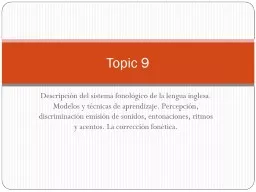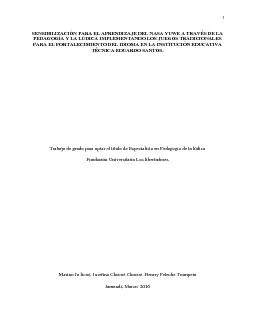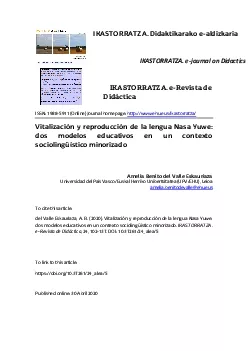PPT-Descripción del sistema fonológico de la lengua inglesa. Modelos y técnicas de aprendizaje.
Author : olivia-moreira | Published Date : 2019-11-03
Descripción del sistema fonológico de la lengua inglesa Modelos y técnicas de aprendizaje Percepción discriminación emisión de sonidos entonaciones ritmos
Presentation Embed Code
Download Presentation
Download Presentation The PPT/PDF document "Descripción del sistema fonológico de ..." is the property of its rightful owner. Permission is granted to download and print the materials on this website for personal, non-commercial use only, and to display it on your personal computer provided you do not modify the materials and that you retain all copyright notices contained in the materials. By downloading content from our website, you accept the terms of this agreement.
Descripción del sistema fonológico de la lengua inglesa. Modelos y técnicas de aprendizaje.: Transcript
Download Rules Of Document
"Descripción del sistema fonológico de la lengua inglesa. Modelos y técnicas de aprendizaje."The content belongs to its owner. You may download and print it for personal use, without modification, and keep all copyright notices. By downloading, you agree to these terms.
Related Documents














